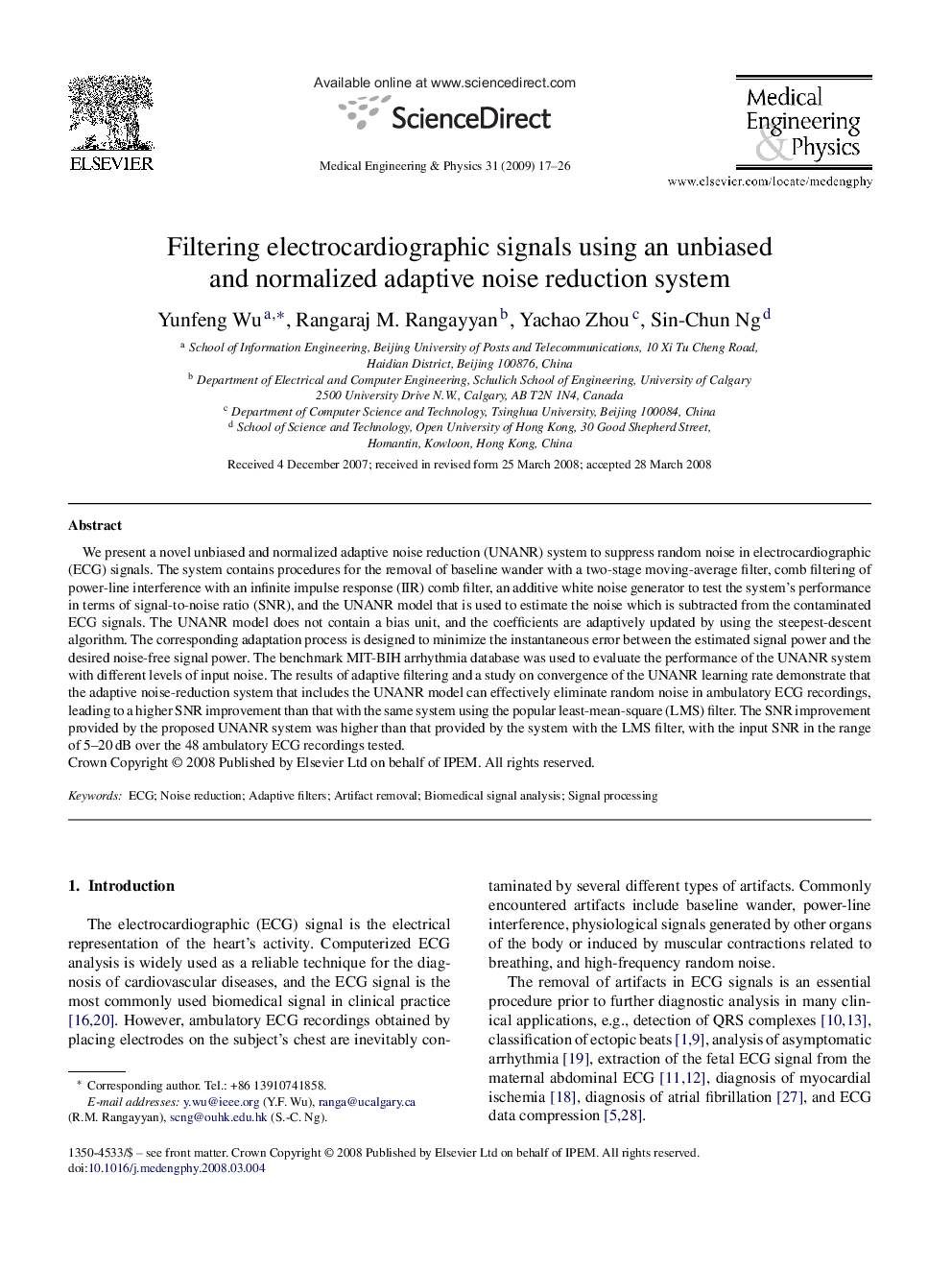| کد مقاله | کد نشریه | سال انتشار | مقاله انگلیسی | نسخه تمام متن |
|---|---|---|---|---|
| 876841 | 910868 | 2009 | 10 صفحه PDF | دانلود رایگان |

We present a novel unbiased and normalized adaptive noise reduction (UNANR) system to suppress random noise in electrocardiographic (ECG) signals. The system contains procedures for the removal of baseline wander with a two-stage moving-average filter, comb filtering of power-line interference with an infinite impulse response (IIR) comb filter, an additive white noise generator to test the system’s performance in terms of signal-to-noise ratio (SNR), and the UNANR model that is used to estimate the noise which is subtracted from the contaminated ECG signals. The UNANR model does not contain a bias unit, and the coefficients are adaptively updated by using the steepest-descent algorithm. The corresponding adaptation process is designed to minimize the instantaneous error between the estimated signal power and the desired noise-free signal power. The benchmark MIT-BIH arrhythmia database was used to evaluate the performance of the UNANR system with different levels of input noise. The results of adaptive filtering and a study on convergence of the UNANR learning rate demonstrate that the adaptive noise-reduction system that includes the UNANR model can effectively eliminate random noise in ambulatory ECG recordings, leading to a higher SNR improvement than that with the same system using the popular least-mean-square (LMS) filter. The SNR improvement provided by the proposed UNANR system was higher than that provided by the system with the LMS filter, with the input SNR in the range of 5–20 dB over the 48 ambulatory ECG recordings tested.
Journal: Medical Engineering & Physics - Volume 31, Issue 1, January 2009, Pages 17–26